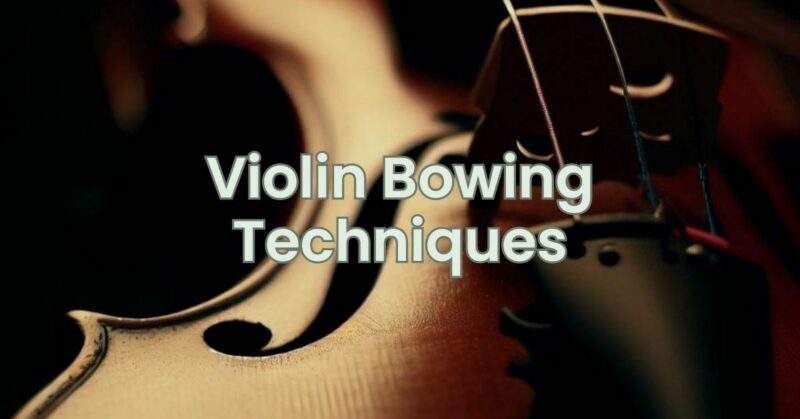Bowing technique is a fundamental aspect of playing the violin, shaping the tone, expression, and overall musicality of the instrument. Understanding and mastering various bowing techniques is essential for violinists at all skill levels. In this comprehensive guide, we will explore some of the essential bowing techniques that will help you improve your control, precision, and expressiveness on the violin.
- Full Bow Stroke: The full bow stroke involves utilizing the entire length of the bow. Start from the frog (the bottom part of the bow near the hand) and move smoothly towards the tip, maintaining consistent speed and pressure. Practice playing long, sustained notes using the full bow stroke to develop bow control, evenness, and tone quality.
- Half Bow Stroke: The half bow stroke utilizes the middle section of the bow. It is useful for shorter notes, quick passages, and articulation. Start from the frog or tip, depending on the desired effect, and move back and forth within the middle section of the bow. Experiment with different bow speeds and pressures to achieve the desired expression.
- Spiccato: Spiccato is a bouncing bow stroke that creates a light, articulated, and lively sound. To execute spiccato, allow the bow to bounce naturally off the strings while maintaining control and a consistent height. Start with short, controlled bounces and gradually increase the speed and length of the strokes.
- Staccato: Staccato involves producing short, detached notes with a distinct separation between each note. To achieve staccato, lift the bow off the strings after each note, allowing for clear articulation. Practice playing scales or simple melodies using staccato, focusing on clean and precise execution.
- Martelé: Martelé is a forceful and accented bow stroke that emphasizes the attack and initial attack of each note. Apply firm pressure at the beginning of the stroke while maintaining a controlled and steady speed. This technique adds intensity and clarity to the sound.
- Legato: Legato refers to playing notes smoothly and connected without breaks or pauses. It requires careful control of the bow to maintain a continuous sound between the notes. Focus on fluid bow changes, smooth string crossings, and seamless transitions to create a cohesive and expressive legato sound.
- Col legno: Col legno involves using the wooden part of the bow to strike or brush the strings, creating a unique percussive effect. Use the backside of the bow (the side without the hair) to strike the strings gently or brush across them for a softer sound. Explore this technique to add texture and color to your playing.
- Tremolo: Tremolo produces a rapid and trembling effect by quickly alternating the bow back and forth on a single note. Use small, controlled movements to maintain a consistent speed and pressure. Practice tremolo on sustained notes to develop precision and evenness.
Mastering various bowing techniques is crucial for violinists to bring out the full potential of the instrument. By incorporating full bow strokes, half bow strokes, spiccato, staccato, martelé, legato, col legno, and tremolo into your practice routine, you can enhance your control, expression, and musicality. Remember to focus on proper bow grip, arm weight, bow speed, and pressure to achieve the desired effects. Regular practice, guidance from a qualified teacher, and careful listening to accomplished violinists will help you refine your bowing techniques and unleash your artistic potential on the violin.


